‘The White Man’s College’: How Antisemitism Shaped Harvard’s Legacy Admissions
The day was June 21, 1922. It had been raining all week, and the grounds of the Old Yard were still damp. The day prior had been Class Day: Every senior had gathered in Sever Quad dressed in caps and gowns. Soon, a new class of students would take their place. As the Class of 1922 prepared for their lives beyond Harvard, top University officials met to discuss what they saw as an emerging problem — the racial composition of future Harvard classes.
In the heart of Harvard Yard, within the white walls of University Hall, professor Charles H. Grandgent, Class of 1883, called the meeting to order. In attendance were 12 members of the faculty, including Paul J. Sachs, Class of 1900, professor of Art History and heir to financial firm Goldman Sachs; Chester Noyes Greenough, Class of 1898, then the dean of Harvard College; and Henry Pennypacker, Class of 1888, chairman of admissions at Harvard College.
Sachs opened the meeting with three questions regarding the racial breakdown of recent Harvard classes:
“Is there a problem? Is it a Jewish problem? Does the problem involve a principle?”
In response, the Committee unanimously voted “Yes.”
In the early 20th century, the number of Jewish students at Harvard rose dramatically. These were the sons of immigrants from Eastern Europe, largely from public high schools in cities on the East Coast. In the 1921-22 school year, Harvard’s student body was 21.5 percent Jewish. By comparison, in the mid-1920s, Jewish people made up approximately 3.5 percent of America’s population. University officials worried about this “overrepresentation” of Jewish people on campus.
Over the course of the 1920s, Harvard’s administration passed a series of admissions policies to limit the percentage of Jewish students in each incoming class. These policies were the first attempts in Harvard's history to restrict the admission of qualified applicants. Legacy admissions were among these changes: A surefire way to preserve the white, Protestant demographics of “Old Harvard” was to admit the white, Protestant sons of “Old Harvard” graduates.
Many of these practices remain in place today. This summer, the Supreme Court released its decision on Students for Fair Admissions v. Harvard, a case that effectively ended race-based affirmative action. Shortly after, Lawyers for Civil Rights filed a federal civil rights complaint over Harvard’s practice of tipping the admissions scales in favor of children of alumni. That same month, the Department of Education announced an investigation into Harvard’s legacy and donor preference policies.
In the conversation around equity and access to elite education, critics say the practice of “legacy admissions” contradicts the University’s stated goals of inclusion and diversity.
Harvard spokesperson Jonathan Palumbo did not respond to multiple requests for comment for this article.
According to proponents, legacy admissions sustain alumni loyalty — and with it, a steady flow of alumni donations. In reality, this relationship is more complicated. A study conducted by The Century Foundation with data from 1998 to 2008 found no statistically significant relationship between legacy admissions and alumni donations among top universities.
What, then, is the purpose of legacy preference? The history of the practice reveals that it was constructed not only to keep the descendants of alumni in, but to keep certain students out.
“Without question, donor and legacy preferences have run along racial lines or at the very least discriminatory lines for years, going back to the ’20s when the legacy practice really became more widespread,” says Michael Kippins, one of the head attorneys for Lawyers for Civil Rights.
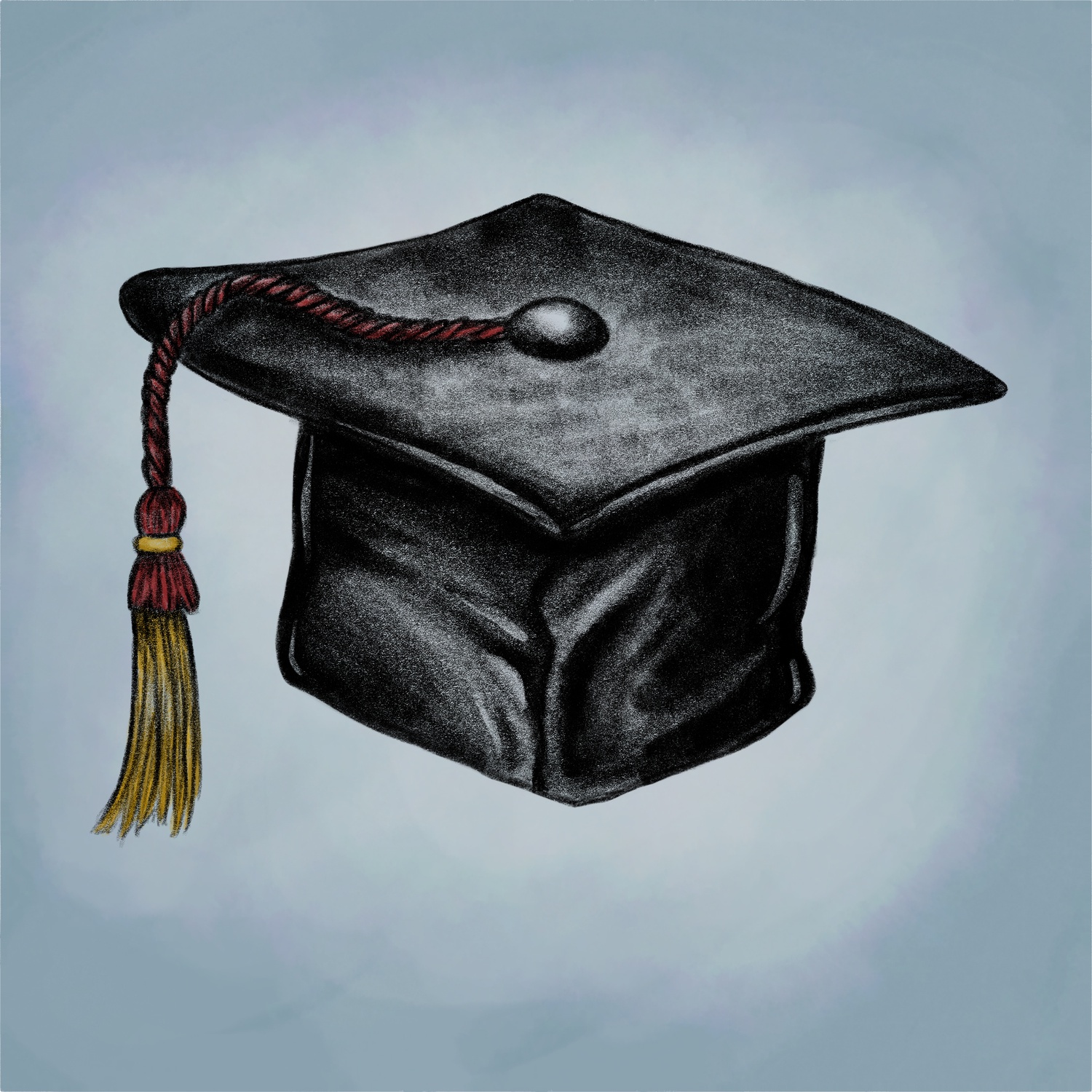
Yet Harvard was never meant to be inclusive in the first place. Why dwell on admissions practices at one of the most selective colleges when only about half of American adults receive a degree from any college?
There is a pipeline between the Harvard classroom and positions of power. A July 2023 paper by Harvard Economics professor Raj Chetty ’00 found that alumni of the Ivy League and other elite institutions disproportionately occupy high-income and powerful positions, such as prestigious graduate programs and fellowships, leadership of Fortune 500 companies, and high-level government seats.
For example, there are only nine justices on the Supreme Court — a body that, in the past two years, has restricted the Environmental Protection Agency’s power to curb carbon emissions, limited legislators’ ability to regulate firearms, and terminated federal protections for legalized abortion. Of those nine justices, four are Harvard alumni, including two from Harvard College.
A Harvard education has the ability to change someone’s life, and, when leveraged properly, to influence the course of the nation. But as legacy admissions favor the children of alumni — who are disproportionately white and wealthy to begin with — many are left questioning the degree to which the University can truly act as an engine of change.
The history of legacy admissions throws the discriminatory structures at the core of Harvard admissions into harsh relief, raising questions about the evolution of Harvard’s mission and who it aims to serve.
‘Tolerably Homogeneous’
On Oct. 6, 1909, Abbott Lawrence Lowell, Class of 1877, was inaugurated as the 22nd president of Harvard University. His presidency was largely marked by his desire to maintain Harvard’s Anglo-Saxon character. During his tenure, he held secret trials to expel students suspected of homosexual activity, attempted to ban Black students from freshman dormitories, and tried to institute a “Jewish quota” to limit the percentage of Jewish students on campus.
Before he became president, Lowell served as the vice president of the Immigrant Restriction League, an anti-immigrant activist group. In 1917, eight years into his tenure at Harvard, he was appointed to the advisory committee for the trial of Nicola Sacco and Bartolomeo Vanzetti, two anarchist Italian immigrants who were convicted of murder, despite what was widely understood to be a lack of strong evidence against them. Lowell’s report for the committee helped quell doubts among New England leaders about the fairness of the proceedings, and the trial concluded with the execution of the men by electric chair.
Many thought the verdict was influenced by nativist sentiment — something Lowell was known to have shared. In a 1918 letter, he stated that “no democracy could be successful unless it was tolerably homogeneous.”
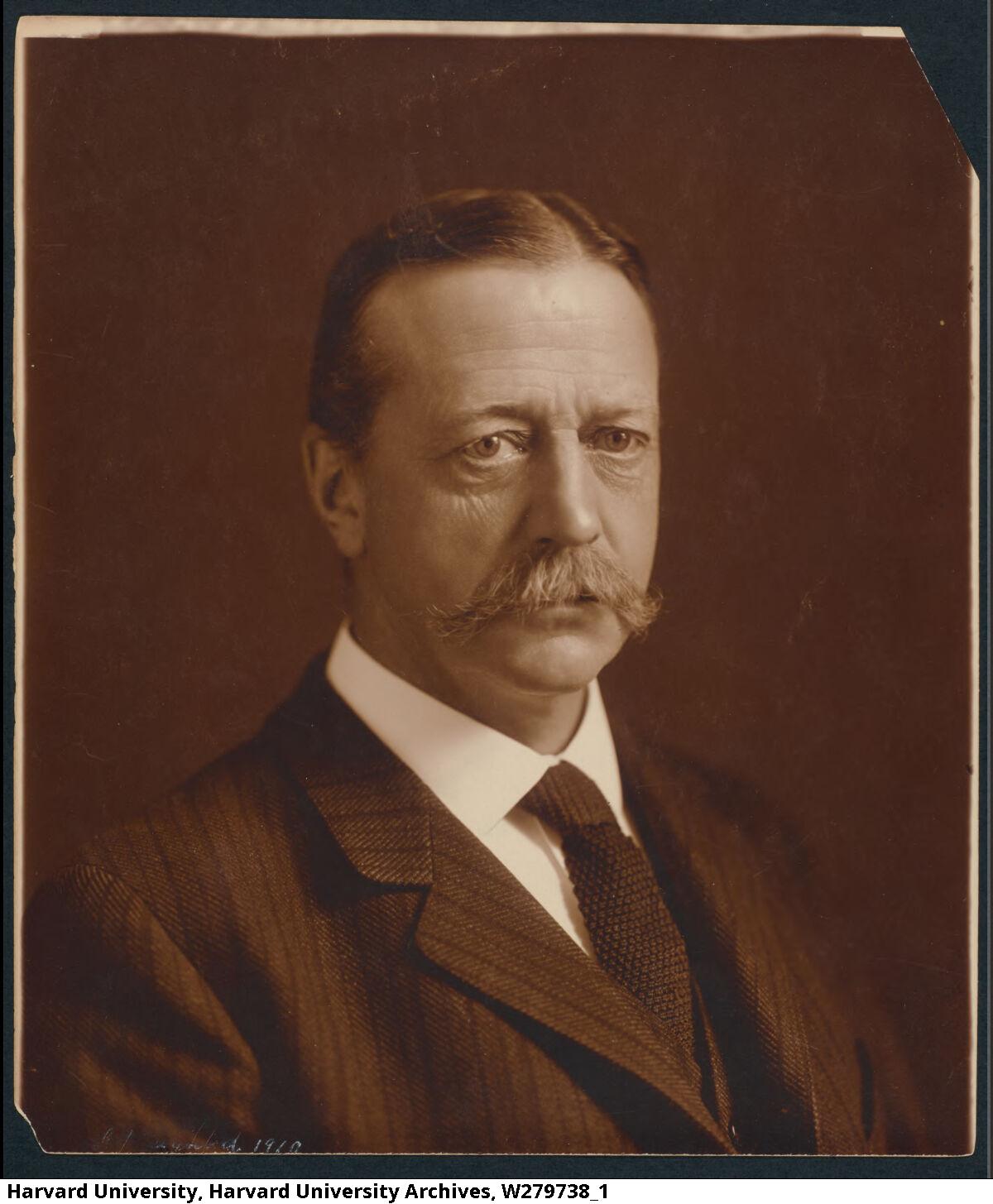
Lowell’s attitude was extreme, but not uncommon for his time. The influx of immigrants from Southern and Eastern Europe at the end of the 19th century, along with the period of post-Civil War Reconstruction, spurred a shockwave of racial anxiety across the United States.
At Harvard, courses on eugenics were taught alongside classes on biology and chemistry. In 1924, a group of graduating students posed with the iconic John Harvard statue in the hooded robes of the Ku Klux Klan. Lowell granted Harvard’s Eugenics Records Office access to “the physical and intellectual records of students” for research in “racial science.”
Despite the hostile environment on campus, Harvard, which “had stood for liberalism, cosmopolitanism, and opportunity,” had been a “special symbol” for Jewish immigrants and their children, wrote historian Marcia G. Synnott ’61 in her book “The Half-Opened Door: Discrimination in Admissions at Harvard, Yale, and Princeton.”
“Boston was a diverse community because it was a big port of entry for immigrants,” she explains in an interview. “Harvard was attractive to that next generation: the sons of those immigrants, as they were smart and did well in school, said ‘Hey, why can’t I go to Harvard?’”
But across Ivy League administrations, anxiety about rising Jewish enrollment was brewing. Historian Jerome B. Karabel ’72 notes that Jewish enrollment at Columbia University before 1920 reached up to 40 percent of the student body. At Columbia, the large population of Jewish students drove away powerful Protestant families at rates alarming to the university. By the 1920s, only 6 percent of Columbia’s students were the children of elite New York families.
Columbia’s case study with “WASP flight” demonstrated what Karabel terms “a clear and present danger for any institution with substantial Jewish presence.” Many of these pedigreed students matriculated to Harvard instead. Lowell was concerned that a large number of Jewish students would cause the sons of Boston Brahmin to matriculate elsewhere, which would “ruin the college.”
Some alumni echoed Lowell’s fears and hostility towards Jewish students. W.F. Williams, Class of 1901, wrote to Lowell after a Harvard-Yale Game, troubled by the number of Jewish spectators in the stands.
“I cannot but feel that your New England blood must run cold when you contemplate their ever-increasing numbers at Harvard,” he wrote. “Are the Overseers so lacking in genius that they can’t devise a way to bring Harvard back to the position it always held as a ‘white man’s college?’”
In its early years, Harvard was restricted to white students, if not in principle then in practice. Before the surge of Jewish students in the 20th century, the applicants who were academically qualified by the standards set out by the administration — a combination of high school grades and exam scores — were usually white, Protestant, wealthy, and related to Harvard alumni. Other groups were explicitly barred from attending Harvard; notably, Black students were not admitted to the University until 1847.
In the early 1920s, Harvard administration formed the Committee on Methods for Sifting Candidates for Admission. Spearheaded by Lowell, the Committee aimed to limit the number of Jewish students on campus.
The “character” of Jewish students came to fascinate the Committee. A letter dated April 7, 1923 and written by the Chair of the Committee, Grandgent, characterizes Jewish students at Harvard as “a better scholar than the Gentile” but also “more prone to dishonesty and sexual offenses, but much less addicted to intemperance.”
Central to the administration’s anxiety about Jewish students on campus was perceived social segregation between Jewish and non-Jewish students. Grandgent notes anecdotally that Jewish students mostly kept to themselves, except for when it came to playing sports.
To prove the existence of the so-called “Jewish problem,” the Committee formed the Subcommittee Appointed to Collect Statistics. The Subcommittee hired statistical experts to produce the Statistical Report of the Statisticians, a comprehensive study of Jewish students at Harvard.
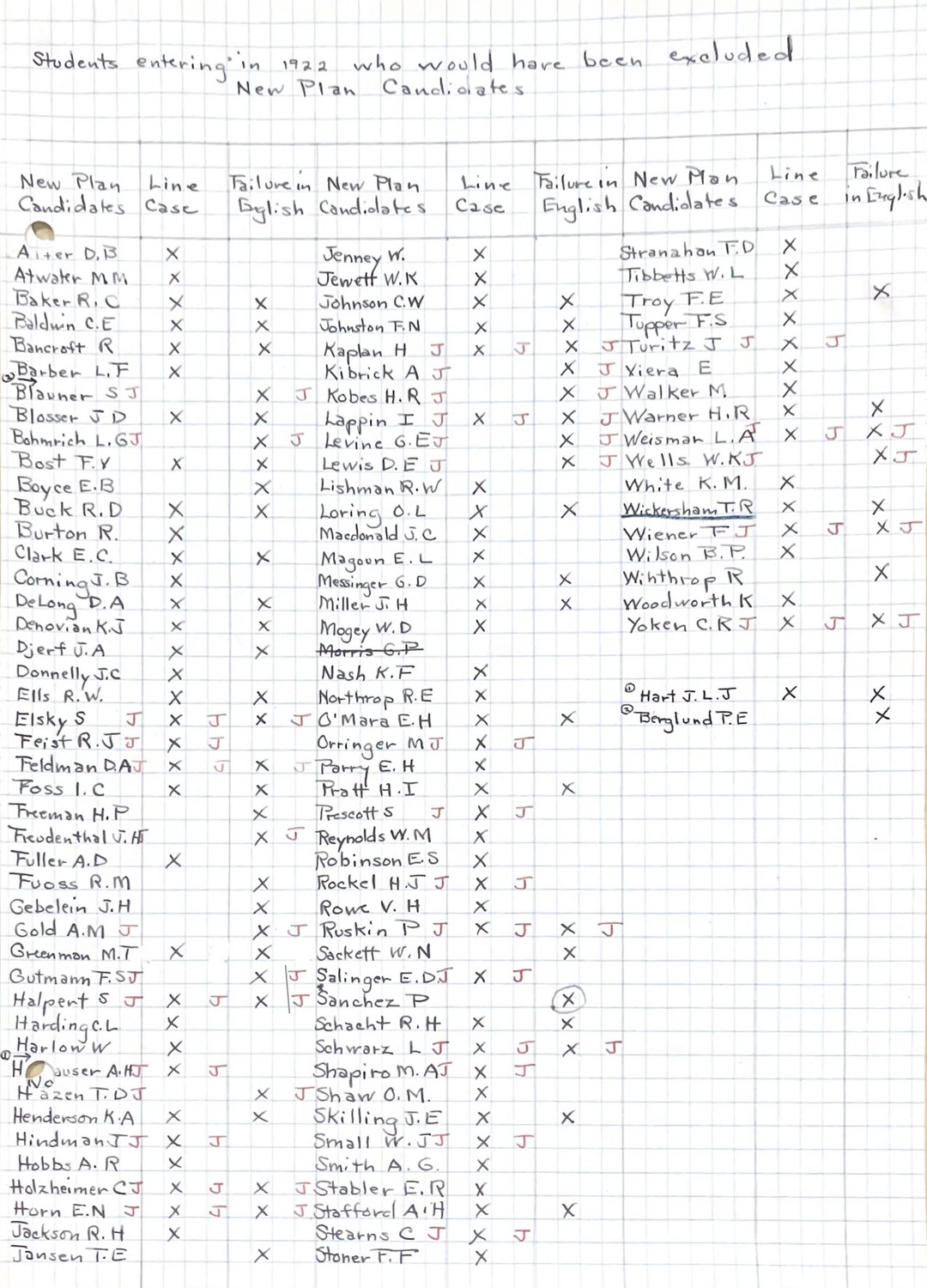
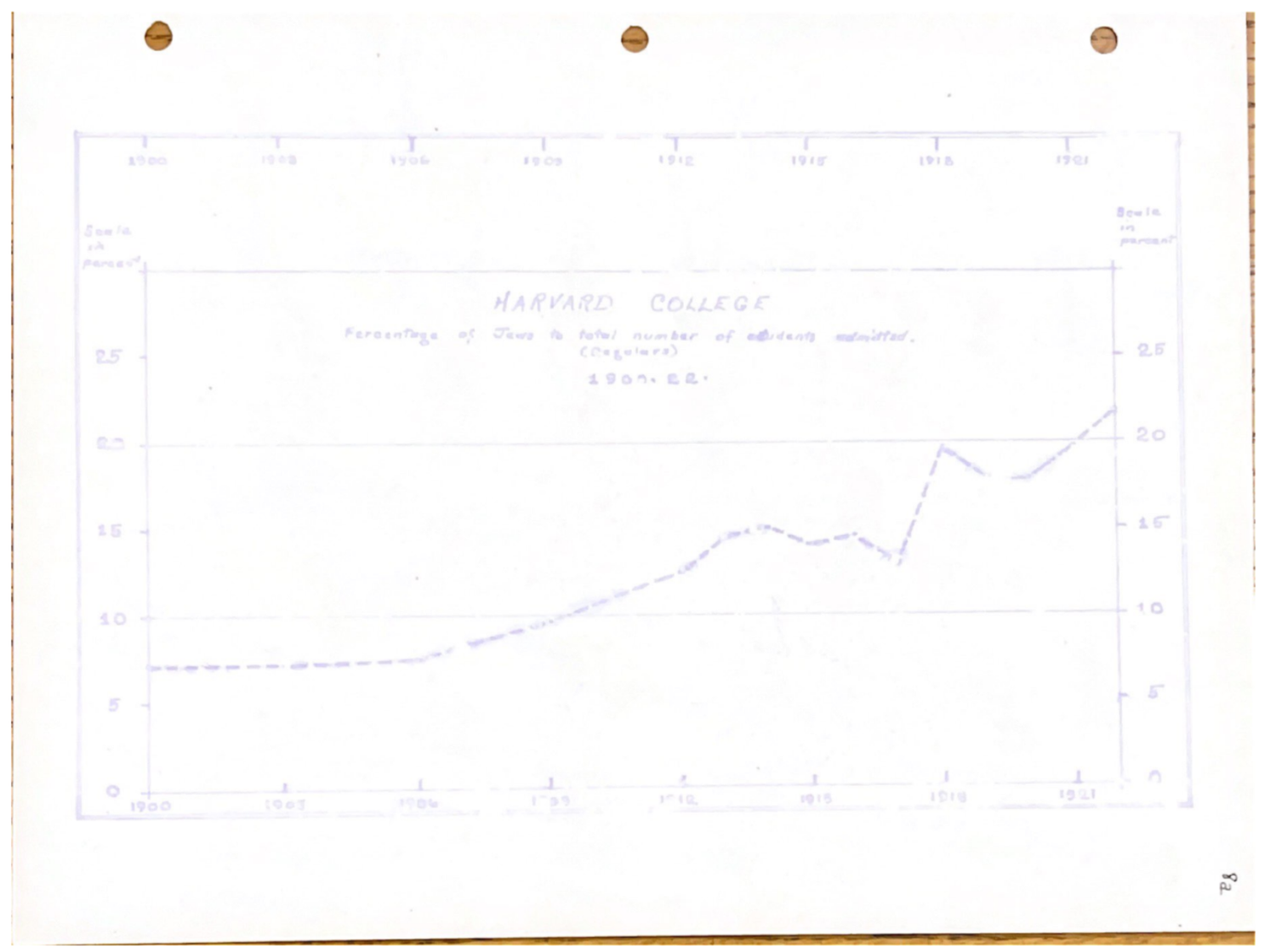
The report included a breakdown of the number of Jewish applicants admitted to Harvard College and each of its graduate schools, both through the regular admissions process and through transfer applications.
The report also studied Jewish life on Harvard’s campus: scholarship, disciplinary cases, participation in athletic and non-athletic student activities, membership in social clubs, membership in final clubs, membership in the Harvard Union, and the percentage of students receiving financial aid.
Finally, the report took note of which graduate schools Jewish students attended after leaving Harvard, as well as their eventual vocation once their education had been completed.
At the time, Harvard did not ask students to identify their ethnicity on their applications. To get a clearer picture of the demographics of its student body, administrators designed an elaborate plan to predict students’ ethnicity. Potential Jewish students were classified into three categories: J1 meaning definitely Jewish, J2 meaning probably Jewish, and J3 meaning possibly Jewish.
Administrators combed through enrollment lists and marked up tables with cryptic symbols — all in service of identifying and quantifying the Jewish presence on campus. Classifications were based on an array of available information, including a student’s last name, secondary school, and financial status.
In the end, the Statistical Report of the Statisticians discredited the Committee’s fears. Jewish involvement in campus life was roughly comparable to that of students who were not Jewish — Jewish segregation, self-imposed or otherwise, was nothing more than a specter. Nevertheless, Lowell directed the Committee to continue updating Harvard’s admissions policies.
In Search of the ‘All-Around Boy’
In 1924, for the first time in Harvard’s history, the University limited the number of students it would accept. Up until this point, so long as a student cleared Harvard’s academic requirements and had the money to attend, they were allowed to enroll. Now, with the rising number of applications, Harvard was faced with having to reject qualified candidates and limit the freshman class to 1,000 students. Harvard’s applicants had finally exceeded its capacity to teach — at least, this was how the administration justified its new limit to the public.
The Committee for Admissions, chaired by Pennypacker sent a missive in March 1924 stating that changes in governing admissions “have been adopted as temporary measures because of limitation of staff and equipment” and added that “the freshman class shall be so restricted as not to exceed the possibility of instruction.”
As a result, the Committee needed to determine who would be admitted to the College and by what standards. One of the key changes to admissions criteria was a newfound emphasis on the applicant’s “character.” Because character could not be quantified through existing methods, the Committee introduced new elements to the application; in particular, the personal essay and the alumni interview.
By 1926, these personal metrics were cemented into the Harvard admissions process. The Alumni Bulletin declared that the Admissions Committee “will attach much weight to character, personality, and promise, but will continue to give preference to men who pass with high rank the admission examinations.”
That same year, Pennypacker described the ideal Harvard applicant: “We are looking, then, for the all-around boy, and we intend to select him, considering every individual’s record with respect to his promise, his intellectual power, to his character, and to the likelihood that he will profit by what Harvard has to offer.”
By 1934, the definition of the “all-around boy” became more explicitly tied to parentage and pedigree.
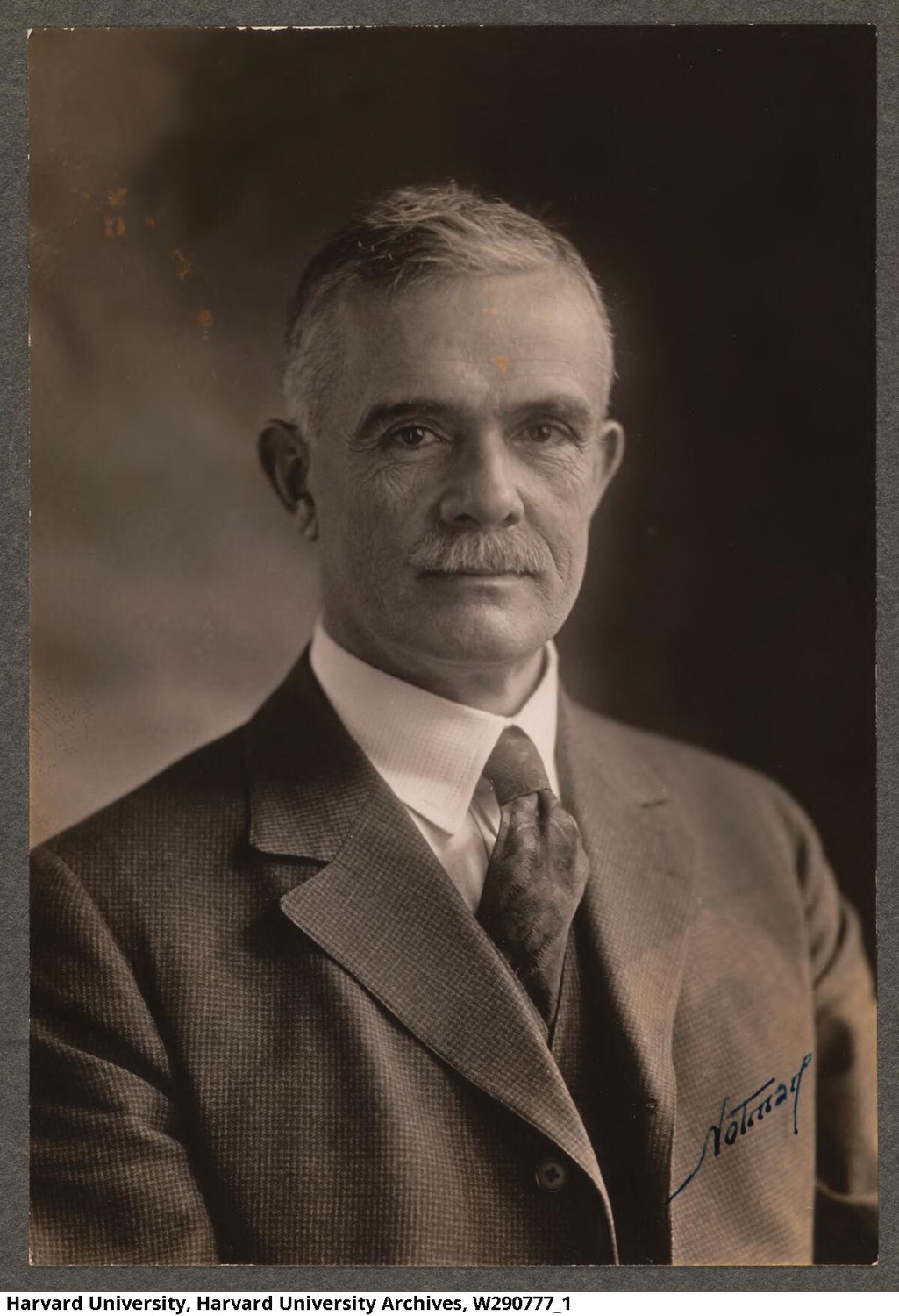
“The sons of alumni type might represent, as you remarked to me, forty percent of an entering class,” wrote Dean of Admissions Richard M. Gummere, Class of 1904, in a confidential letter to then-University President James Bryant Conant, Class of 1913, noting that the number was necessary to “conform to a reasonable minimum requirement.”
According to Gummere, the sons of graduates would form a group “from which the ‘manager’ type and the class officer and the later business man would come.”
A 1929 Crimson article titled “Class of 1932 Superior Scholastically to Freshmen of Last Year — Large Percentage Are Sons of Harvard Graduates” corroborated the view that children of alumni were better suited to academic success. The article noted that 48 percent of the freshman class consisted of sons of alumni, insinuating that this high proportion was responsible for the class’s high academic achievement.
However, it was unclear whether legacy students actually outperformed their peers academically.
“Even if the statistics recently published at Harvard show the public-school product to be the protagonist in Phi Beta Kappa and Summa Cum or Magna Cum Laude degrees, this superiority may be ascribed to the fact that one does not find many public school boys at Cambridge who can afford to neglect their works for the sake of social contacts,” Gummere wrote in that same letter to Conant.
“If the private-school group, from places like Exeter and Milton, decided in caucus to go after Phi Beta Kappa, they could reverse these figures in a single year,” he claimed.
At the time, the overlap between Jewish students and public school students at Harvard was substantial.
A 1949 memo marked “Confidential For Use of Schools and Scholarship Committees” states that “it is customary to admit sons of alumni provided they are qualified academically and appear to have good character, a stable personality, and a sincere desire to obtain a liberal education.” Legacy preference admissions policies showed how strong personal metrics, perceived academic abilities, and alumni parents characterized Harvard’s ideal of a successful applicant.
‘You Are Indicting the Entire Jewish Student Body’
Despite the administration’s claims that its limitation on class size was due to a lack of capacity, its actual motives were much more sinister.
Shortly before the 1,000-student restriction was put into place, Lowell corresponded with Henry James III., Class of 1899, son of philosopher William James, Class of 1865, writing: “To prevent a dangerous increase in the proportion of Jews, I know at present only one way which is at the same time straightforward and effective, and that is a selection by a personal estimate of character.”
Such a selection, Lowell added, “can be carried out only in case the numbers are limited. If there is no limit, it is impossible to reject a candidate who passes the admissions examinations without proof of defective character.”
In other words, the purpose of restricting class size was not to preserve instructor capacity; it was to cap the number of Jewish applicants admitted to each class. Seemingly innocuous methods for measuring character were deliberately created to exclude Jewish students.
One such method was the personal interview. During a Committee on Methods meeting on Nov. 6, 1922, Chemistry professor Lawrence Joseph Henderson, Class of 1898, pointed to Columbia and Cornell medical schools, which “discriminate on the basis of personal interviews, in view of the fact that a selection of candidates must be made.”
The minutes add: “The Columbia Medical School has reduced the percentage of Jewish students very materially of late.” As the meeting wore into the evening, the Committee also discussed “the possibility of personal examinations.” The members alluded to instituting a physical examination into the admissions process, although the exact nature of this examination was left unclear.
To complement this heightened emphasis on character, the 1926 Alumni Bulletin announced another application requirement: a personal photograph. This was one of many additions to the application that allowed admissions officers to deduce an applicant’s ethnic background. Other additions included questions about the applicant’s mother’s maiden name and whether any changes had been made to the applicant’s name or that of their father.
In public statements, the University reaffirmed their commitment to non-discriminatory treatment. The apparent dissonance between these statements and internal admissions policy decisions reflects Harvard’s attempt to determine demographic information without appearing prejudiced against any particular religious or racial group.
In the summer of 1922, Lowell asked professor Harry Austryn Wolfson to join the Committee on Methods. Born in Belarus to Jewish parents, Wolfson immigrated to the United States at 16 and later earned his bachelor’s, master’s, and doctorate degrees at Harvard. By the time Lowell sought his presence on the committee, Wolfson was an assistant professor in Jewish philosophy and literature.
Lowell’s request seemed like a surprising one, considering that Wolfson was a Jewish immigrant who studied the Jewish intellectual tradition, and the purpose of the committee was to reduce the number of Jewish students at Harvard.
However, Lowell argued in a letter to Wolfson that the question of Jewish limitation “is even more important to the Jews than to anyone else.”
“The fundamental question seems to be how we can prevent a repetition here of the conditions of Jewish segregation which exist in the central and eastern parts of Europe, from which so many immigrants of that race are now coming,” he wrote in that same correspondence, dated June 15, 1922.
Lowell claimed to believe that an increased number of Jews on campus would trigger antisemitic reactions within the student body, creating a prejudiced, discriminatory environment that would harm Jewish students.
However, instead of remedying that antisemitism, Lowell’s solution was to simply prevent Jewish applicants from arriving at Harvard in the first place, and he wanted a Jewish professor to help him do it.
Wolfson accepted the position. “I will not consider myself to act in the capacity of a representative Jew to any larger extent than which I can lay claim to,” he wrote to federal judge Julian W. Mack. “I will enter the service in the capacity of one who happens to possess some knowledge of the subject with which the committee, as is conceived at present, is primarily concerned.”
“Throughout the Faculty discussion I was impressed with the general lack of accurate information about the Jewish student body and their antecedents,” he continued. He wrote in favor of including “a social survey of the Jewish student body” in the Committee’s report. “It may not, perhaps, modify the recommendations of the present committee, but it will certainly knock the bottom out of some of their recommendations.”
Wolfson opposed his colleagues’ belief in totalizing assimilation. To him, Jewish segregation — if it existed at all — was not necessarily a problem. In a letter to Harvard Law professor Felix Frankfurter, he wrote, “It is just as much important for us to insist upon the right of Jews, of any kind of Jews, to live a free, unhampered Jewish life in the University, so far as it does not interfere with University regulations, as it is for us to insist upon unrestricted admissions.”
“I am quite aware that some non-Jews are not as yet prepared to grant us that point, and are apt to look upon any form of Jewish activity as an attempt toward Jewish segregation,” he continues. “Well, we will have to make them see the error of their view.”
As he spent more time on the Committee, Wolfson became increasingly concerned with Harvard’s image.
Committee meeting minutes from March 12, 1923 report that the Chairman read a letter from Wolfson about certain questions on the application form, which sought information about a student’s race, if they had changed their name, and religious preference.
The Committee agreed with Wolfson’s suggestion to ask these questions of admitted students rather than applicants, so as not to appear discriminatory in the eyes of the public. In the same meeting, the Committee agreed not to make the Statistical Report of the Statisticians public for fear of seeming prejudiced.
Wolfson’s concerns were not unfounded. In a letter to Grandgent, he notes that the publicity of Harvard’s admissions debate had triggered flare-ups of antisemitism across other college campuses, something he compares to “the unruly spirit of mobs.”
“It seems that some irresponsible students in various places, perhaps only in the exuberance of youth, have taken to Jew-baiting, as yet of a mild form, as a new kind of college sport,” he wrote. He references antisemitic posters at New York University and student resolutions at Syracuse University to restrict the number of Jewish students on their campus.
Despite Wolfson’s disagreements with his colleagues, he outwardly defended the Committee’s purpose. On April 12, 1923, Wolfson responded to a letter from Rabbi Louis Israel Newman, in which Newman argued that Harvard’s push for geographic diversity in admissions was a ploy to harm Jewish applicants.
“If the ‘exclusion of Jews’ were, as you say, the purpose of the proponents of the new method, it would seem they have devised a rather poor method of accomplishing their purpose,” Wolfson wrote.
His defense of Harvard’s policies was a far cry from his thoughts on restriction before he joined the Committee.
In a letter from the late spring of 1922, Wolfson accused his colleagues of basing their characterization of Jewish students not on facts, but “upon hearsay, upon vague impressions, and upon untested popular opinions.”
“About a year ago, one of your leading scholars published an epoch-making article in which he showed how for many centuries Christian writers had misquoted, misunderstood, misinterpreted Jewish texts on which they had drawn indictments against Judaism,” he wrote. “Today, you are indicting the entire Jewish student body without even taking the trouble of acquainting yourselves with the simplest facts of their lives, their thinking, and their believing.”
Although Wolfson later worried about Harvard appearing discriminatory to the public, he initially believed that if discrimination were to occur, then Harvard should be as transparent as possible about their intentions.
“Should you decide to fix the quota of Jews such as is suggested in Professor Ropes’ resolution, we hope you will do it openly as you had originally intended to do,” he wrote.
His statement reads with a bitter irony. In dryly suggesting a direct quota, he is asking Harvard to admit to the discrimination hiding within its bureaucracy.
“There is a great moral advantage to be gained by the Jews in being singled out for discrimination,” wrote Wolfson. “If the University is to gain any advantage by limiting the number of Jews, it should be generous enough to allow the Jews the moral satisfaction of knowing that they are discriminated against for being what they are.”
‘Allowing Racism to Proliferate Through the System’
Though legacy was unofficially in practice throughout Harvard’s history, and was one of several policies used to exclude Jewish students, it’s unclear when it became codified in admissions policy. We could not find a publically available “smoking gun,” no document or proclamation or motion instating preference for the sons of graduates at Harvard, though the practice persists to this day.
That said, looking at peer institutions gives us a good sense of what the evidence may have looked like. Karabel and Synnott identify the origins 0f legacy preferences at other Ivy League schools during this wave of antisemitism in admissions. Dartmouth College codified legacy admissions in 1922.
In that same year, a Yale Board of Admissions memo entitled “Memorandum on Jewish Representation in Yale” stated that the only “successful” criteria devised by any university to exclude Jewish students had done so through “non-intellectual requirements” to circumvent their academic qualifications.
The memorandum included a comprehensive list of measures taken by Yale’s peer institutions to restrict the population of Jewish students. The note reads: “Columbia — Psychological tests; Princeton — undergraduate sentiment; Harvard — New Plan examinations, refusal of transfers and registration data; Dartmouth and Williams — dormitories and general restriction of numbers.”
While many policies implemented by various schools seemed innocuous at face value, the Yale Board of Admissions highlights that they were all in service of exclusion for the purpose of maintaining a specific Anglo-Saxon character in the university.
Restrictions on Jewish applicants were thought to have continued as late as the 1950s. In a paper titled “The Changing Harvard Student: Ethnicity, Race, and Gender,” Synnott cites a letter from 1948, in which a Chicago alumnus writes that his daughter, upon applying to Radcliffe, was “very distinctly told that there was a nonofficial Jewish quota” by Radcliffe alumni. The passport-sized photograph requirement remained on the application until 1958.
Though the black box of admissions policies makes it hard to definitively conclude when antisemitic admissions policies fell away, Jewish enrollment rebounded in the 1960s. A 1967 report cited by the Jewish Telegraphic Agency places the percentage of Jewish students at Harvard between 20 and 25 percent, though current-day statistics show a smaller proportion of Jewish students at Harvard today — according to The Crimson’s freshman survey of the Class of 2025, about 7.4 percent of the class identified as Jewish.
In the early 1970s, in the wake of the Civil Rights Movement, the discourse around Harvard’s admissions began to focus more on the inclusion of Black students.
According to Synnott, the Black student population doubled between the classes of 1972 and 1975, from 4.24 percent to 8.68 percent. A concentration in Afro-American Studies was first made available to students starting with the Class of 1972. When race-based affirmative action was deemed constitutional in the 1978 ruling on Regents of the University of California v. Bakke, Justice Lewis F. Powell Jr. cited the “Harvard Plan” — Harvard’s method for recruiting minority students — as a model for other universities in creating a diverse incoming class.
Since the Supreme Court effectively struck down race-based affirmative action this summer, legacy admissions have come under scrutiny for their continued use, with critics pointing to their role in producing disproportionately white and wealthy admissions classes.
Though legacy admissions began as a way to exclude Jewish applicants specifically, today, many now worry that the practice contributes to the exclusion of applicants of color, specifically Black and Latinx applicants.
This past July, Lawyers for Civil Rights filed a federal complaint against Harvard on behalf of three social justice organizations. In the complaint, they argued that “Harvard admits predominantly white students using donor and legacy preferences, and, as a direct result, excludes non-white applicants.”
The complaint alleges that legacy admissions violate the Civil Rights Act of 1964, which prohibits practices that have significant discriminatory impacts on the basis of race.
“Especially when we know that the government provides ample funds to Harvard and many other universities, we want to make sure that that money is going to institutions that are not supporting or allowing racism to proliferate through the system,” says Kippins, the attorney.

Kippins adds that nearly 70 percent of legacy or donor admits are white, and that if legacy preferences were abolished, then admission rates for applicants of color would increase while admission rates for white applicants would decrease.
A bill jointly presented to the Massachusetts House of Representatives and State Senate, if passed, would require universities in Massachusetts to either eliminate legacy admissions or pay a fee to the state.
“There are a few devices that really jumped out at me and many others in the public as fundamentally unfair, as un-American, and as profoundly inconsistent with the values that elite liberal arts institutions purport to champion,” says State Rep. Simon Cataldo, one of the bill’s co-authors. “I think legacy admissions may be the most pernicious on its face.”
Harvard spokesperson Jonathan Palumbo did not respond to a request for comment.
Defenders of legacy admissions have argued that students with the advantages afforded by a privileged parent are simply better qualified for college. In an application that values high SAT scores, impressive extracurriculars, and stellar grades, wealthy students tend to perform better, Chetty finds.
However, it is not just the privileges afforded by wealth that improve the chances of a legacy student, Chetty finds — it is their legacy status.
If the children of alumni were equally as qualified as their exceptional peers, Chetty reasons, they would have an equally high chance of acceptance at another Ivy League or an institution of equal caliber outside of their parents’ alma mater. Instead, Chetty finds that these students see no boost on their applications when applying to other elite schools.
“I would just say that there should be no scenario where an applicant of color stares at a rejection letter, while some less qualified white applicant celebrates being the third in their line to go to Harvard,” Kippins says.
‘A Broader Construction of Merit’
The debate around the dismantling of legacy admissions always comes back around to meritocracy. Who deserves a spot at Harvard? In the 1920s, the prevailing attitude was that it was not just the exceptional scholar who merited a spot, but the exceptional scholar who would also uphold the Anglo-Saxon tradition of the University. Today, the landscape surrounding who should merit admission to the nation’s most elite institutions has shifted.
“If you ask most Americans how they think students should be admitted to college, they want students admitted based on merit, by which they mean how well a student has done in terms of academics and extracurriculars in light of what obstacles they’ve had to overcome in life,” says Richard D. Kahlenberg ’85, who served as an expert witness for Students for Fair Admissions in their lawsuit against Harvard.
Others challenge the very foundations of meritocracy. In an excerpt from his book, “The Tyranny of Merit,” Government professor Michael J. Sandel wrote “meritocracy today functions less as an alternative to inequality than as its primary justification.”
“Merit is an arbitrary construction because it fluctuates based on what a society finds valuable at any given time,” Sandel argues.
He also claims that the idea of meritocracy encourages successful people to believe that they have earned their prosperity — and, consequently, that those in less privileged positions have earned their lot as well.
Sandel’s arguments disrupt the bedrock of selective admissions, challenging the idea that admission to Harvard is deserved at all.
“It cannot really be said that even students who win admission through the front door did so solely on their own,” Sandel wrote. “What about the parents and teachers who helped them on their way? What about talents and gifts not wholly of their making? What about the good fortune to live in a society that cultivates and rewards the talents they happen to have?”
Instead of obsessing over whether or not someone is qualified to get into Harvard, John Jay College of Criminal Justice professor Evan J. Mandery ’89, suggests that the first step to a more just education system “involves a broader construction of merit” — one premised on the democratization of higher education instead of deliberate exclusion.
Top Harvard administrators have appeared to leave the door open for an end to legacy admissions in recent months.
When asked about legacy admissions in an October interview with The Crimson, University President Claudine Gay said: “Everything is on the table.”
Faculty of Arts and Sciences Dean Hopi E. Hoekstra went further, telling The Crimson later that month that ending legacy admissions is “under consideration” by Harvard.
But even if Harvard abolishes legacy preferences, whether it can truly democratize its admissions remains in question.
Every year, Harvard receives tens of thousands of applications. In recent years, they have admitted around 3 percent of those hopeful students. Harvard’s admissions officers spend untold hours carefully crafting the university’s newest class of students, ranking and rating each applicant behind closed doors.
Each admissions cycle brings several times more qualified applicants than spots in the incoming class, leading many to refer to Harvard admissions as essentially a lottery. Statistically, every person who gains admission is lucky. Yet that “luck” still depends on a myriad of factors and privileges, which compromise Harvard’s ability to be inclusive.
***
The year was 1930, and hammers rang out on Mount Auburn Street. South of the “Gold Coast” dorms of what we now call Adams House, famed for high rents and cushy accommodations, the construction of a new dormitory was underway. Scaffolding snaked up red brick walls and the outline of a prominent bell tower was beginning to take shape. The new dorm would revolutionize Harvard housing: It was to be a place where students could live together, regardless of financial means and background. According to a New York Times report, the dorm was created to “bring together as many students as possible.”
The building was to be named Lowell House.
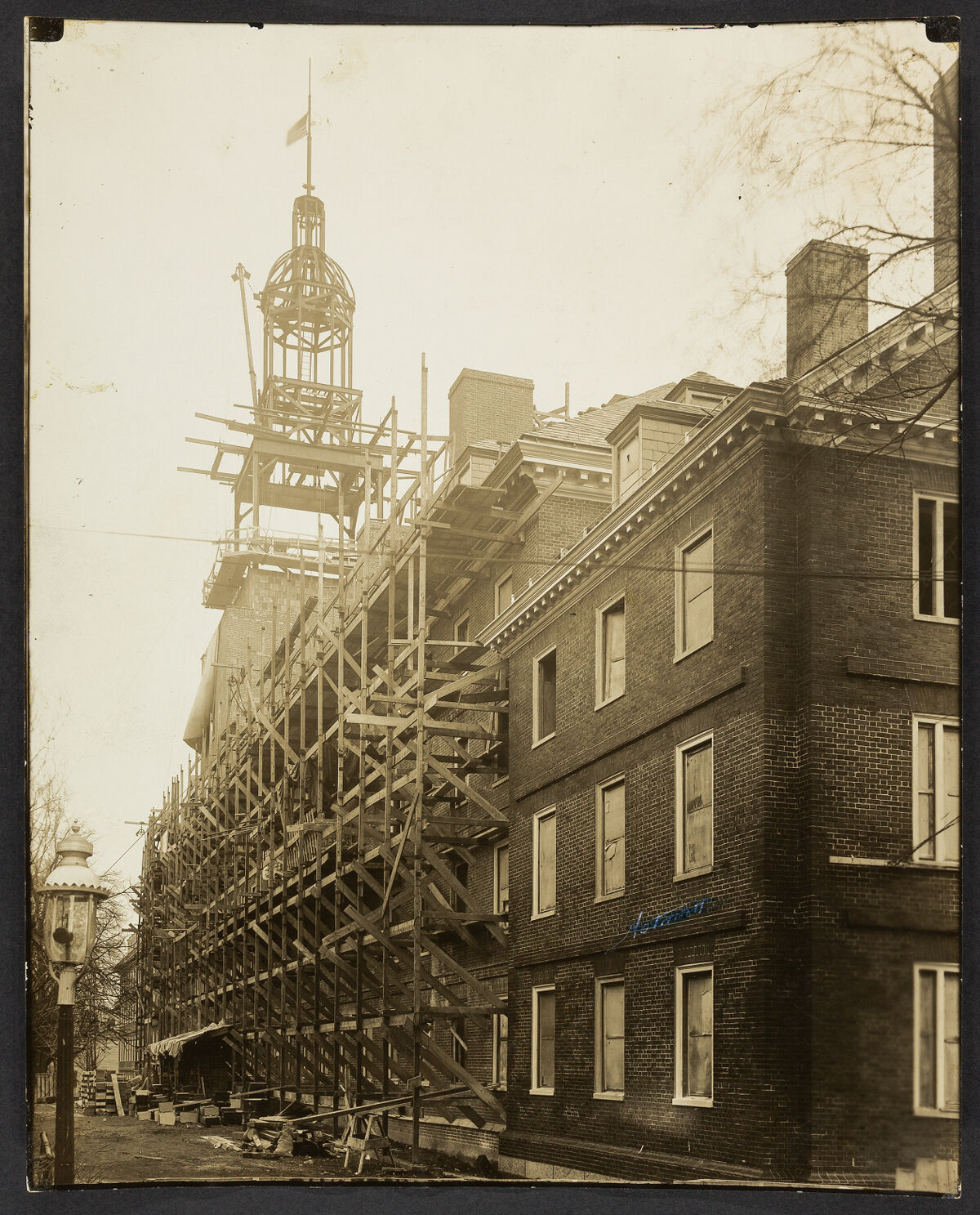
—Magazine writer Serena Jampel can be reached at serena.jampel@thecrimson.com.
— Magazine writer Yasmeen A. Khan can be reached at yasmeenkhan@thecrimson.com. Follow her at @yazzywriting
